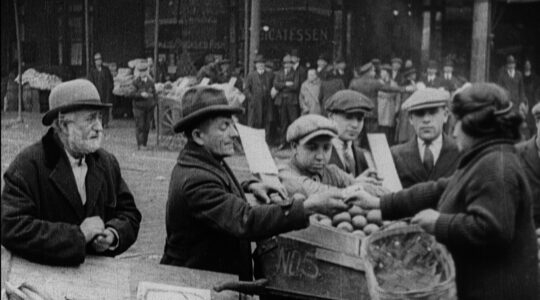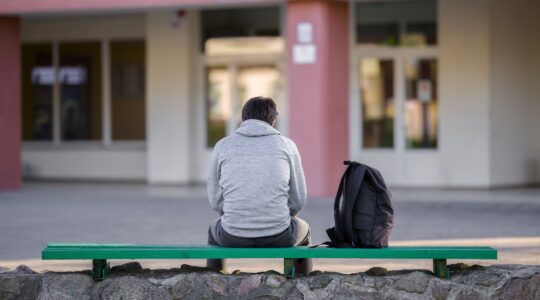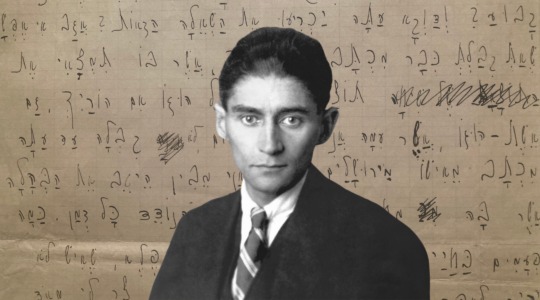Someone wondered: What effect would the Mumbai attack by Islamic terrorists have upon Chabad’s presence in dangerous places?
I never met Rabbi Gavriel Noach Holtzberg or Rebbetzin Rivkah Holtzberg, martyrs of the Mumbai massacre, but I met more than a thousand of their spiritual brothers and sisters, the shluchim and shluchot, the rebbe’s emissaries, and here’s what they always told me when the situation was darkest.
Chabad doesn’t quit. They stood their ground in Czarist Russia, and they didn’t quit after the Holocaust, and they didn’t abandon Crown Heights after the 1991 riot. Chabad doesn’t quit even in Islamic countries that might blow up any minute, such as Morocco, where Chabad teachers still operate in a city called “Gazablanca.”
They were working in the spiritual and anti-Semitic ruins
of East Berlin when religion was criminalized, before the wall fell, and they were working in the Jewish ruins of Dnepropetrovsk before that Ukrainian city was open to the West and their activity could have meant a trip to the gulag. Chabad is still in the Congo amidst Africa’s “world war,” and they’re still working in inner city neighborhoods where experts say “there are no Jews there anymore,” except there are.
They didn’t sign up to be American “clergy” whose idea of activism is announcing how their partisan politics are – surprise! – identical to Torah values. No, the Chabad idea of activism was to enlist for a lifetime job in Siberia, or Beijing, or Mexico, or Mumbai, a life in the trenches, on the front lines — the first wave in God’s infantry.
Even as I write this, Chabad is planning to re-open the Chabad House at 5 Hormusji Street, the now-famous Nariman building in Mumbai.
Jews don’t run. Chabad doesn’t run. Tonight, in India, Rabbi Tzvi Rivkin and Rebbetzin Noa will be open for Friday night davening and hosting people for Shabbos meals on Brunton Cross Road in Bangalore; Rabbi Baruch Shanhev and Rebbetzin Rachel Tova will be open for davening and Shabbos meals on Club House Road in Manali; Rabbi Guy Efraim and Rebbetzin Maya will be open for davening and Shabbos meals in Anjuna Village; and tonight, you can bet on it, there will be Shabbos in Mumbai.
Jews lit candles in the Warsaw Ghetto until they ran out of wicks, and tonight Jewish women in Mumbai will be lighting Shabbos candles not a second after 5:42 p.m., India time. That’s what Jews do. That’s what Chabad does.
Maybe some Jews will be understandably less inclined to backpack in India, or to do business in India, but plenty of Jews will still pass through Mumbai and Chabad will be there when they do.
There’s a war on — a spiritual war as much as a shooting war — and Chabad knows it. The Lubavitcher rebbe is their Churchill, even from the Other World. Good men and women will die, but Chabad will never surrender. They call their youth group Tzivos Hashem, the Army of God. The Holtzbergs were in it when they were young. Their two-year-old baby, Moishele, will be in it soon enough.
When the Lubavitcher rebbe, Menachem Mendel Schneerson, died in 1994, all the experts wondered how soon would Chabad fold.
This is what Chabad did. A Chabad carpenter sawed wood from the rebbe’s lectern to build a casket; a Chabad burial society gently poured water over the rebbe’s body and wrapped him in a shroud; straw was placed on the floor and the rebbe’s body was placed on it; and then they drove to the cemetery and laid the rebbe in the ground. That night they davened Maariv. The next morning they showed up for Shachris. Then, over the next 15 years, they sent out several hundred shluchim and shluchot – including the Holtzbergs — representing the rebbe.
Chabad did what they had to do when the rebbe died and they’ll do the same now.
Almost every year I go to their international get-together of the rebbe’s emissaries – the most recent was held last Sunday, although Rabbi Holtzberg, perhaps by Providence, stayed in Mumbai for one last Shabbos with his wife and child.
At the annual gatherings, I’d meet some of the 3,500 emissaries from places that seem far from the front pages, except they all seemed to end up on the front pages: Chabadniks from Thailand, before the tsunami; from New Orleans, before Katrina; from the Congo and turbulent Africa, before their wars; and Chabadniks from India. They are the most heroic young people ordained in the last 20 years. I never met the Holtzbergs, but I never met any Chabad emissary who wasn’t a happy warrior.
Back in the 1990s, many journalists thought it mattered that the rebbe didn’t have a successor. In fact, it never mattered at all. What happened was that each of the shluchim became de facto rebbes, emissaries of the rebbe, in their corner of the world.
Chabad will not abandon Mumbai. The Holtzbergs, never to be forgotten, will be replaced in the trenches, as soldiers always will.
The Mumbai rebbe is dead. Long live the rebbe.
The New York Jewish Week brings you the stories behind the headlines, keeping you connected to Jewish life in New York. Help sustain the reporting you trust by donating today.




